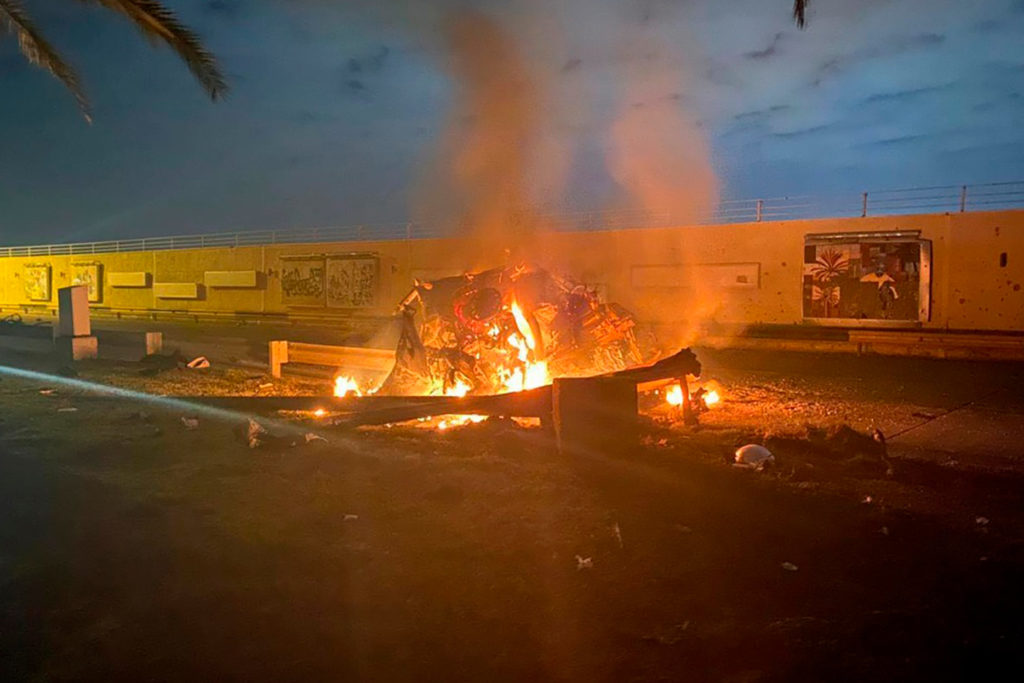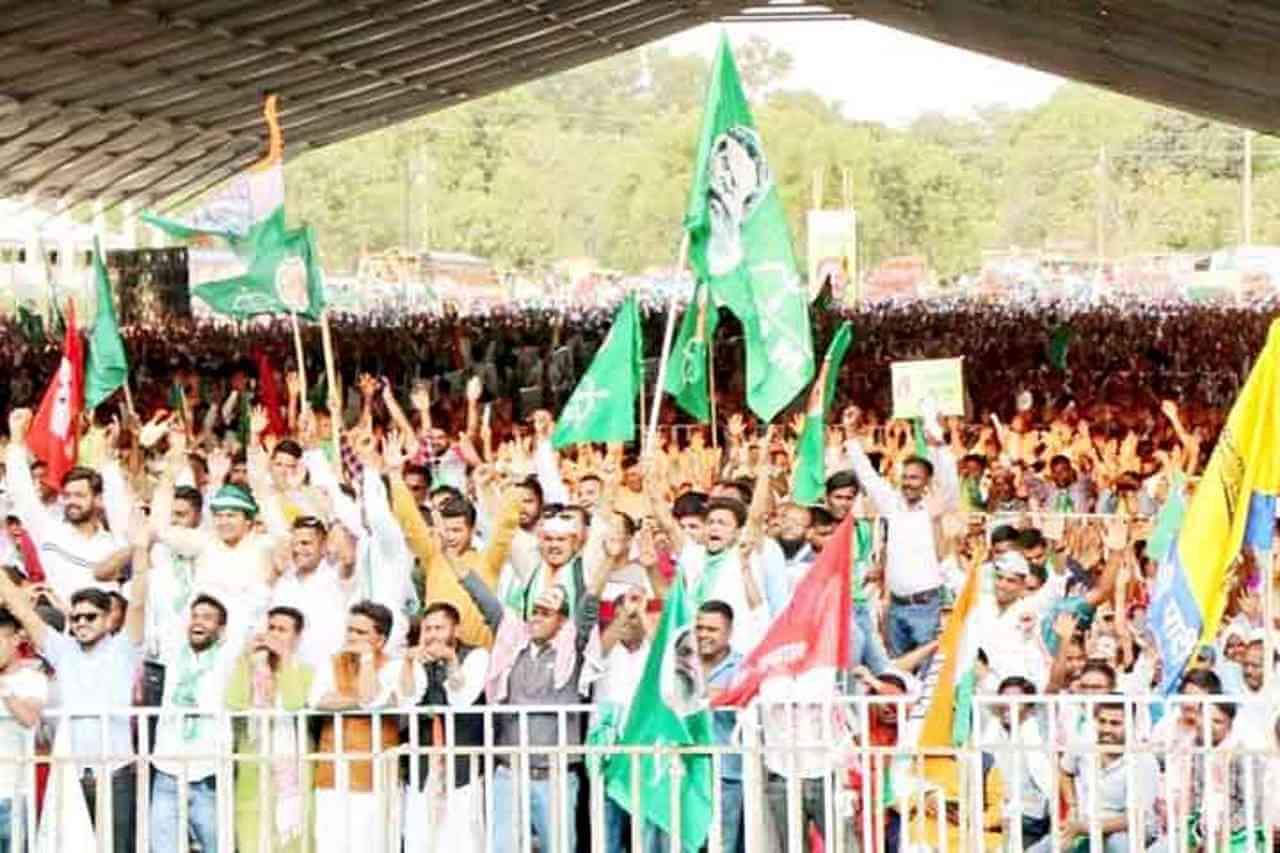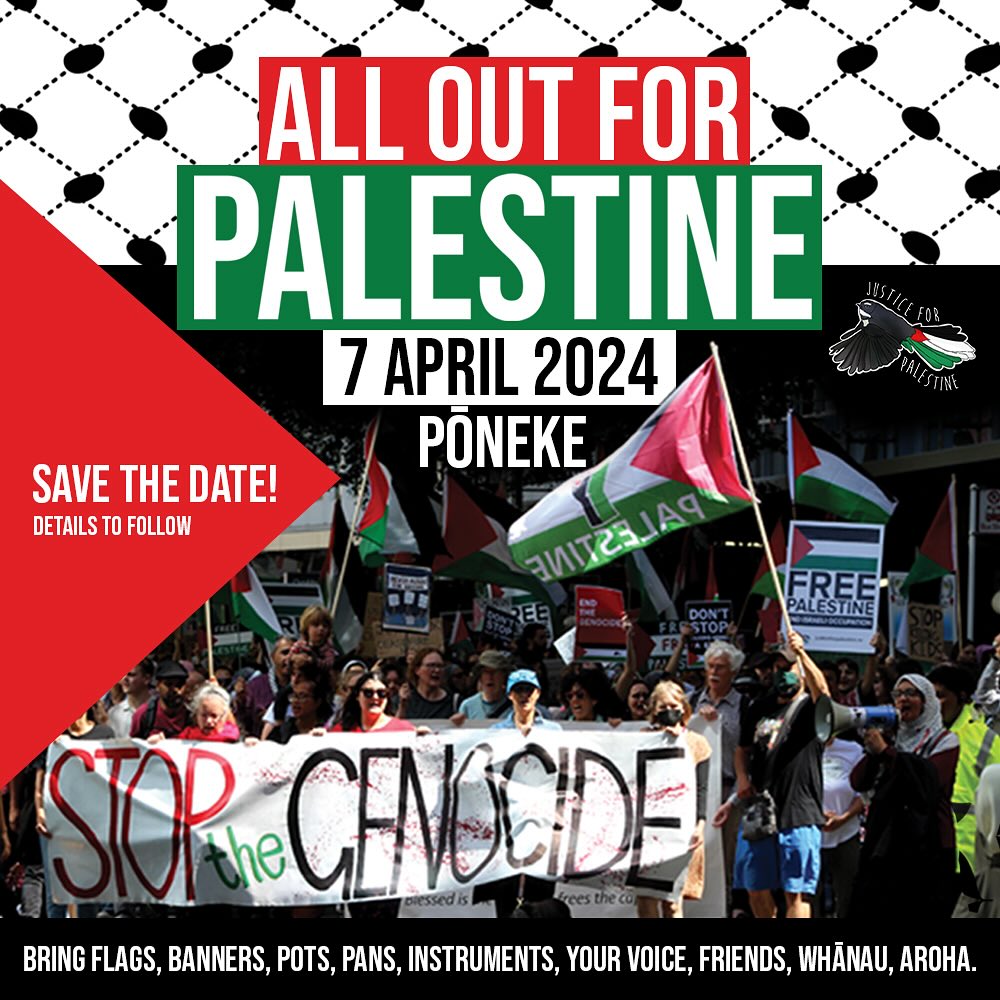Trump’s assassination of Iran’s top general Qasem Soleimani by drone strike at a civilian airport, has caused an uproar and may lead to a regional war, with Iran striking back at US Military bases in the region. Every detail that comes out in this crisis is more shocking than the last. But focusing on the madness of the Trump circus and prelude to war means that the important movements for popular power and against sectarianism in Iraq and Iran are under threat writes Josh O’Sullivan.
On the 3rd of January the U.S. carried out a drone strike on a convoy traveling near Baghdad International Airport, Killing General Qasem Soleimani, commander of Iran’s Quds force, nine other passengers were also killed including the Deputy Chairman of Iraq’s Popular Mobilization Forces (PMF) Abu Mahdi al-Muhandis. In retaliation Iran has launched missile strikes against two US bases in Iraq, the al-Asad airbase, and in Erbil in Kurdistan area of Iraq. Though it seems that the outbreak of a serious regional war has been narrowly averted for the time being, Trump’s latest recklessness has made the situation ever more precarious.
Soleimani was meeting to discuss the easing of tensions between Sunni Saudi Arabia and Shia Iran and the Iranian backed militias in Iraq. According to the Prime Minister of Iraq Adil Abdul Mahdi:
“I was supposed to meet him in the morning the day he was killed, he came to deliver a message from Iran in response to the message we had delivered from the Saudis to Iran”.
The attack itself was carried out at the direction of US President Donald Trump. According to leaks from the Pentagon itself, a presentation that detailed the possible options to the President had placed assassination by drone strike at the end. Stated by unnamed Pentagon officials this was put in to make the other proposals seem more reasonable. Trump ordered the strike and told the Iraqi government of its intention just minutes before the attack.
Soleimani was not just a general in Iran, but rather over the last 20 years he has been the architect of Iran’s regional power base throughout the Middle East. He oversaw the support for Tehran’s allied militias – in Lebanon, Yemen, Iraq and Syria. His support was essential in developing the PMF in Iraq, the Iranian backed Shia militias that now form a large part of Iraq’s military.
The situation in Iraq was already dire for U.S. interests in the region. The US had attacked PMF forces near Iraq’s border with Syria, and the Shia militias lead an occupation at the US Embassy in Baghdad on the 30th of December. The Shia majority in the Iraqi government in response to the strike voted to expel American troops from the country in a bid to extract the country from an escalating US-Iran proxy war. Trump’s response is the announcement of large sanctions against Iraq in retaliation for asking for troops to be removed. However, given the retaliatory attacks from Iran against US bases in Iraq, the Iraqi governments attempt to extract themselves from an Iran-US proxy war seems doomed to fail and given the wider association of Iranian backed militias across the region could lead to a wider regional conflict.
There is a myriad of reasons being proposed by commentators across the political spectrum for Trump’s war footing and destabilisation of the Middle East. Some contend that this is an escalation to ensure that US forces can maintain control of Iraqi oil reserves, and state that the US is jealously staring at the newly announced Iranian oil field that might contain over 50 Billion barrels of oil. It could be, as some have stated, that Trump is getting a war-footing to maintain his position as president through the presidential elections this year. The strike has caused a complicated mess that could easily devolve into a wider regional war. But delving into this cacophony of imperial clashes often covers over the agency and activity of real people on the ground – the popular movements clamouring for revolution across the Middle East.
Despite the claims of Iranian regime supporters, Soleimani is no martyr. He is a leader that has developed Iranian influence across the region, in an inter-imperialist regional struggle between Iran, Saudi Arabia, Turkey and Israel, with grander superpowers looming overhead such as Russia and the US.
His role in supporting and setting up militias and directing them has caused countless deaths across the Middle East not just against reactionaries like ISIL fighters and the like but also repressions against popular movements against sectarianism. In Iraq, the Iranian backed Shia militias have opened fire on Iraqi protestors fighting for major reforms from their government.
Always in the geopolitical response to these crises, states are recognised – but not the mass movements vying for freedom and inequality. Over the past 6 months – massive popular protests have swept through the Middle East region – from Baghdad to Beirut there is a clear call for revolution. In Tunisia, Jordan, Sudan, Algeria, Egypt, Iraq, Iran and Lebanon people overcame the persistent repression and attacks from authoritarian governments to demand equality and political reform across the whole region.
In Lebanon, a country demarcated along sectarian religious lines, mass protests erupted against new taxes, morphed into a wide-ranging popular movement for regime change and an end to the sectarian government. “All of them means all of them” protesters chanted nationwide, demanding the ouster of Lebanon’s entire ruling class. That this includes Hassan Nasrallah, leader of Iranian backed Hezbollah, led to Hezbollah supporters attacking demonstrators, re-opening key roads and setting their tents on fire. Despite this, 1.5 million Lebanese Sunnis, Shias and Christians have been walking side by side and raging against the system, demonstrating the fallacy of religious sectarianism that has been the bedrock of political power in the Middle East.
In November in Iran, the largest protest movement since the 1979 revolution erupted last year in response to a 50% increase to fuel prices. This rapidly developed across the country with popular struggle burgeoning in towns and cities across Iran. The regime’s response was brutal with at least 1000 people killed, over 4000 injured and 12,000 arrested. Details have been scarce due to the regime blocking internet access. By assassinating Iranian General Qasem Soleimani last week, Washington has helped the Islamic Republic to supercharge its discourse of resistance to the United States and suppress dissent even more effectively.
In Iraq, Baghdad’s Tahrir Square has been the centre of ongoing protests since last October, starting with demands for clean water, jobs and electricity. When Iraqis stood up against rampant corruption and poor living conditions, they were met with brutality from Iraq’s security apparatus and Iran-backed militias. The tone of the protests quickly turned against Iran. Yet the movement—though very critical of Tehran’s overreach and role in the bloody crackdown on protesters—was never pro-American.
Tens of thousands of demonstrators have marched over the past ten weeks and the protests have spread across the country. The Iraqi people demand an ouster of the government, an end to corruption and a halt to the influence of both the US and Iran. “We Want a Homeland” is one of the rallying cries – calling out for an independent Iraq free from foreign meddling and ending the entire political system of sectarianism that is used to govern in the country.
The prime minister, Adel Abdul Mahdi, has resigned but has remained in a caretaker role, and Parliament has yet to come up with someone to replace him, largely due to the aforementioned corruption. This turmoil and breakdown in government leaves the popular movement particularly exposed in Iraq and Iran.
After the storming of the US embassy by the Iranian backed Shia militias, a list was supposedly found on a laptop of people collaborating with the US. It was an obvious fabrication, but it targeted specifically the leaders of the anti-government protestors, a worrying sign for the popular movement, especially with the heavy pressure from Tehran to find a new Prime Minister friendly to Iran. But the protest movement hasn’t disappeared, far from it, on the 6th of January Iraqi protesters flooded the streets to denounce both Iran and the US as “occupiers”, angry that fears of war between the rivals was derailing the anti-government movement. As Ahmed Saadawi writes in the Guardian:
“The ongoing proxy battle between the Americans and Iranians – and the emaciated state of the Iraqi government – is driving this movement for a restored nation, which will persist despite last week’s events. It is the demonstrators who represent the country’s true will, which is a desire to restore Iraq’s independence and free it from its Iranian and American captors.”
As this wave of demonstrations engulfed the Middle East, one common factor connected the protests from Baghdad to Beirut: a deep and widespread feeling of anger toward the Iranian regime. This is especially true in the bloodied towns and cities of Iraq. Soleimani and Muhandis, both targeted by the strike, were possibly the two most influential men in Iraq and are responsible for the brutal crackdown on demonstrations since October. We have seen the stories about the US and its campaign for dominance and hegemony – but we also must recognise that the Iranian regime is just as much of a danger to popular movements for revolution.
Since the Iraq War of 2003 regional and local stability (for the imperial powers) in the middle east has relied upon sectarianism and exacerbating the separation between Sunni groups supported by Saudi Arabia and Shia groups supported by the Iranian regime. Any change in that balance is likely to have major repercussions for all the regional powers. It is likely that these peace talks suggested by Saudi Arabia and Iran, are more to do with making sure that the delicate sectarian balance between Sunni and Shia which empowers both states across the region continues in the face of mass revolt and democratic movements springing up from below across the middle east. The last thing Israel and Saudi Arabia want is US withdrawal from the region – both of these regional powers and their client states such as Egypt receive billions of dollars of support from the U.S. and utilise US military hegemony to go after their own interests such as the Yemeni-Saudi Arabia war and the continuing occupation and settling of Palestine.
US imperialism is nothing to support – but neither is Iran. Both look to foster sectarian divides to prevent popular struggle from usurping political power and creating a future for themselves. We cannot fall into the same trap as many in the international left found themselves in after Syria. We cannot adopt the 30 second soundbites or short headlines of the media that present the world as a simplistic black/white, US/Iran duality. Many anti-imperialists have long supported the brutality of the Assad regime in the name of being against the US, despite the barbarity of a ruling class trying to maintain power. Yet here again we have anti-imperialists turning Soleimani into a heroic figure who fought against ISIS – never mind the cruel calculated assaults on the popular movements across the middle east perpetrated by the Iranian Regime, and its key General, in its search for regional power.
For us on the other side of the world our task is easier – we must demand our government remove its troops from the region – we are acting as clients of an imperial power that is preventing democratic development and revolution in the middle east.
Secondly, we must support the nascent rebirth of the Arab Spring. From Algeria to Sudan, from Iraq to Lebanon, people continue to march on, demanding social and economic reforms, demanding a revolution, demanding an end to corruption and authoritarianism and fighting against the sectarianism that has kept them divided and under the thumb of their ruling classes.
“Neither Washington nor Tehran, but the People and the oppressed!”









